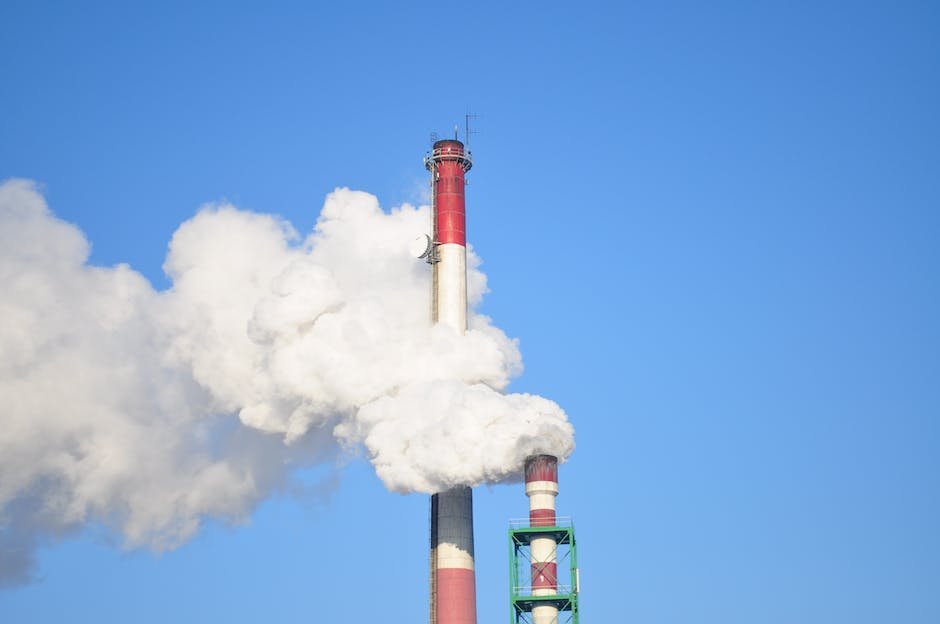When the sun sets over the horizon and the stars twinkle in the night sky, there’s an undeniable allure to cooking a meal under the open stars. Whether you’re an avid camper, an outdoor enthusiast, or simply someone who yearns for the rustic charm of cooking outdoors, mastering the art of efficient cooking becomes paramount. That’s where the ingenious rocket stove comes into play—a minimalist yet supremely efficient cooking device that harnesses the power of science and simplicity. By maximizing heat transfer and minimizing fuel consumption, this remarkable invention has revolutionized outdoor cooking. In this guide, we will delve into the mesmerizing world of rocket stoves and show you step-by-step how to build your very own, bringing a touch of ingenuity to your culinary adventures. So, gather around, curious souls, as we embark on a journey to unlock the secrets of the rocket stove and elevate your outdoor cooking experience to new heights.
Table of Contents
- Choosing the Right Materials for Building Your Rocket Stove
- Building the Foundation: Constructing the Base and Insulation
- Designing the Combustion Chamber: Key Considerations and Guidelines
- Constructing the Chimney and Ventilation System for Optimal Airflow
- Enhancing Efficiency: Tips for Proper Operation and Maintenance
- Q&A
- Future Outlook

Choosing the Right Materials for Building Your Rocket Stove
Materials Considerations for Building Your Rocket Stove
- Insulating Materials: When constructing a rocket stove, it is important to select insulating materials that can withstand high temperatures and efficiently retain heat. Vermiculite, perlite, or ceramic fiber insulation are popular choices due to their excellent thermal properties.
- Combustion Chamber: The combustion chamber of a rocket stove experiences intense heat, so it must be built using durable materials. Fire-resistant bricks, refractory cement, or stainless steel are ideal options that can withstand the extreme temperatures generated during combustion.
- Fuel Port: The fuel port is the entryway for feeding wood or biomass into the stove. It is crucial to use a material that can resist heat and be easily replaced if it becomes damaged over time. Stainless steel or cast iron are suitable choices for durability and longevity.
Note: The specifics of material selection may vary depending on the design and size of your rocket stove. Consulting with an experienced builder or researching reputable sources can provide invaluable guidance.

Building the Foundation: Constructing the Base and Insulation
When it comes to building a sturdy foundation, constructing the base and ensuring proper insulation are two crucial steps that cannot be overlooked. The base serves as the backbone of the structure, providing stability and support, while insulation plays a key role in maintaining a comfortable and energy-efficient environment.
First and foremost, the base needs to be carefully designed and constructed. This involves excavating the site, preparing the ground, and pouring a solid concrete foundation. By using high-quality materials and adhering to industry standards, you can ensure the longevity and durability of your construction project.
Next, let’s talk about insulation. Whether you’re building a residential or commercial space, insulation is essential in regulating the temperature within the building. Properly insulating your walls, floors, and roof helps to prevent heat loss during the winter and keep the interior cool in the summer. Some popular insulation options include fiberglass batts, spray foam, and rigid foam boards.
To summarize, building a strong foundation requires careful attention to the base and insulation. Consider using materials that are known for their strength and durability in the construction of the base. Additionally, invest in quality insulation to ensure a comfortable and energy-efficient building. By prioritizing these key elements, you’re laying the groundwork for a solid and efficient structure that will stand the test of time.

Designing the Combustion Chamber: Key Considerations and Guidelines
When it comes to designing the combustion chamber, there are several key considerations and guidelines that engineers must bear in mind. These factors play a crucial role in achieving optimal performance and efficiency in combustion systems.
One of the most important considerations is the geometry of the chamber. The size and shape of the combustion chamber can have a significant impact on the combustion process. An efficient design ensures proper mixing of fuel and air, allowing for complete combustion and minimizing emissions. Additionally, the chamber should be designed to promote turbulence, enhancing the heat transfer and combustion efficiency.
Another crucial guideline is the selection of materials. The combustion chamber operates under high temperatures and pressures, making it essential to choose materials that can withstand these extreme conditions. Heat-resistant alloys, ceramics, and thermal barrier coatings are often employed to ensure durability and longevity of the chamber.
Moreover, proper fuel and air distribution is vital for efficient combustion. Achieving an ideal fuel-to-air ratio is key to minimizing pollutant emissions and optimizing performance. Designers must carefully consider the injection or distribution mechanisms, ensuring uniform mixing and avoiding hotspots or lean spots.
In summary, designing the combustion chamber requires careful attention to geometry, material selection, and fuel-air distribution. By adhering to these key considerations and guidelines, engineers can develop combustion chambers that maximize energy conversion and minimize environmental impact.
Constructing the Chimney and Ventilation System for Optimal Airflow
When it comes to building the perfect chimney and ventilation system, there are several key factors to consider to ensure optimal airflow throughout your space. One of the first steps is to carefully select the materials for the chimney, ensuring that it is both durable and properly insulated. This will not only prevent heat loss but also contribute to efficient airflow.
Next, it’s important to consider the design of the chimney. A well-designed chimney will not only provide a safe exit for smoke but also contribute to a steady and consistent airflow. By incorporating a tapered shape and utilizing a chimney cap, you can prevent downdrafts and keep unwanted debris from entering the system.
Additionally, a ventilation system plays a crucial role in maintaining a healthy and comfortable indoor environment. Proper ventilation not only removes stale air but also helps regulate temperature and control humidity levels. Consider installing vents strategically throughout your space to ensure consistent airflow, taking into account the placement of windows and doors.
- Insulation: Choose high-quality, well-insulated materials for your chimney.
- Chimney Design: Opt for a tapered shape and chimney cap to prevent downdrafts and debris.
- Ventilation System: Install vents strategically for consistent airflow and temperature regulation.
By considering the construction of your chimney and ventilation system, you can create a space with optimal airflow, promoting a healthy and comfortable environment for all. Don’t overlook these essential elements and enjoy the benefits of a well-ventilated space.
Enhancing Efficiency: Tips for Proper Operation and Maintenance
##
### Operation Tips:
– **1. Optimize equipment usage:** Regularly monitor and adjust the use of equipment to ensure that it operates at maximum efficiency. Avoid overloading or underutilizing machinery to eliminate unnecessary energy consumption.
– **2. Implement preventive maintenance:** Regularly schedule maintenance checks and inspections to identify any potential issues before they escalate. This includes cleaning, lubricating, and replacing parts as needed. By adopting a proactive approach, you can minimize downtime and extend the lifespan of your equipment.
– **3. Utilize technology:** Embrace the power of technology to optimize your operations. Employ automated systems that monitor and control essential functions, reducing human error and optimizing efficiency. Invest in energy-efficient equipment and monitor performance through data analytics to identify areas for improvement.
### Maintenance Tips:
– **1. Keep a maintenance log:** Maintain a detailed record of all maintenance activities, including dates, tasks performed, and equipment conditions. This log can help you track trends, identify recurring issues, and schedule future maintenance effectively.
– **2. Regularly clean and inspect equipment:** Clean your machinery and equipment regularly to remove debris, dust, and other contaminants that can hinder performance. Conduct thorough inspections to identify any signs of wear and tear, leaks, or malfunction that might require immediate attention.
– **3. Train your workforce:** Provide comprehensive training to your staff on proper equipment operation and maintenance procedures. Well-trained employees can identify and address minor issues, ensuring smooth operations and reducing the risk of costly breakdowns.
By implementing these tips and best practices, you can enhance efficiency in your operations while reducing maintenance costs and downtime. Remember, a well-maintained and properly operated system is the key to achieving optimal performance.
Q&A
Why should I build a rocket stove for cooking?
Building a rocket stove provides a cost-effective and efficient way to cook food. Its design allows for high heat production with minimal fuel consumption, making it perfect for outdoor adventures and off-grid living.
What materials do I need to build a rocket stove?
You will need basic materials such as bricks, cement, and a metal pipe for the chimney. You can also use recycled materials like tin cans or scrap metal, making it an environmentally friendly project.
How much time does it take to build a rocket stove?
The time required to build a rocket stove depends on your level of experience and the size of the stove. Generally, it can take anywhere from a few hours to a full day to complete the construction.
Can I use a rocket stove indoors?
Rocket stoves are primarily designed for outdoor use due to the smoke and potentially harmful gases they produce. However, with certain modifications, it is possible to safely use a rocket stove indoors, such as proper ventilation and a well-designed flue system.
How efficient is a rocket stove compared to traditional cooking methods?
Rocket stoves are highly efficient, using up to 80% less fuel than conventional cooking methods. Their design ensures a clean and hot-burning fire, resulting in reduced smoke and faster cooking times. It is an excellent alternative for those looking to save energy and reduce their environmental footprint.
Are there any safety considerations when using a rocket stove?
While rocket stoves are generally safe to use, it is important to follow precautions. Ensure proper ventilation, keep flammable objects away from the stove, and take extra care when dealing with open flames. It is always advisable to supervise the stove while in use and keep a fire extinguisher nearby.
Can I cook various types of food on a rocket stove?
Absolutely! Rocket stoves are versatile and can be used to cook a wide variety of dishes. From boiling water and simmering stews to grilling and baking, a well-built rocket stove can handle it all, offering a satisfying culinary experience in any outdoor setting.
Future Outlook
As the flames dance and the savory scents fill the air, your homemade rocket stove becomes the heart and soul of your culinary haven. With a dash of creativity and a sprinkle of ingenuity, you have unlocked the secret to efficient cooking like never before.
Remember, building your rocket stove was just the first step on this fiery adventure. Now, armed with this incredible tool, you can delve into the realms of experimental cuisine, pushing the boundaries of culinary artistry. From sizzling stir-fries to simmering stews, your taste buds are in for a treat.
But it doesn’t stop at just tantalizing your palate. The rocket stove’s efficient design boasts a commitment to sustainability, ensuring that you cook with both culinary flair and a clear conscience. Embrace this eco-friendly marvel, reducing your carbon footprint one scrumptious meal at a time.
So, gather your loved ones and embark on this shared journey of cooking brilliance. Let the rocket stove’s radiant flames become a gathering point, where stories are exchanged, laughter echoes, and memories are etched into the very fibers of your being.
As you bid the world of traditional cooking methods farewell, rest assured that your rocket stove will revolutionize your culinary escapades. Embrace this new chapter in your kitchen adventures, where imagination has no limits and efficiency reigns supreme.
As the final embers fade, your rocket stove leaves a lasting incandescent mark on your life. It becomes not just a tool, but a symbol of your resourcefulness and commitment to living in harmony with nature. With each cooking experience, you fuel your creativity while taking a step towards a greener tomorrow.
So now, go forth, fellow culinary alchemist! Cook with passion, create with fire, and savor the moments that unfold around your radiant rocket stove. Bon appétit and may your culinary endeavors reach celestial heights!
As an affiliate, my content may feature links to products I personally use and recommend. By taking action, like subscribing or making a purchase, you’ll be supporting my work and fueling my taco cravings at the same time. Win-win, right?
Want to read more? Check out our Affiliate Disclosure page.